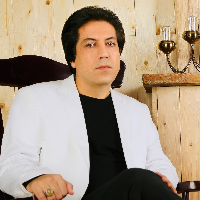Hierarchical analysis of the concepts of change from popular art (kitsch) to architecture and meaningful cinema in Iran with an identity-oriented approach (case example: Where is the friend's house? Abbas Kiarostami)
Author(s):
Article Type:
Research/Original Article (دارای رتبه معتبر)
Abstract:
The aim of this research is to analyze the hierarchical concepts of change from popular art (Kitsch) to architecture and semantic cinema in Iran with an identity-oriented approach, which examines the film Khaneh Doost by Abbas Kia Rostami. The general stages of the discussion deal with the common concepts in these two fields of art by explaining the model of the relationship between cinema and architecture and the definition of semantic cinema, and in the meantime, identity is criticized as an identifying element of art. The research method in this paper, considering that it focuses on component linkage, uses Pierce's logical method, which is applied in terms of purpose and based on analytical, descriptive and a combination of qualitative (from sample to theory) and quantitative ( From theory to example) And in terms of method on explaining the theoretical content of theoretical findings, interdisciplinary and case study has been done and Also, questions and interviews with experts in these two fields (cinema and architecture) are among the pillars of research. In the following, by using the film "khaneh doost" by Kiarostami (famous Iranian director and writer), an attempt has been made to analyze the concepts in question, where identity is the main issue. The transformation of a work of art from an inefficient and useless work into a semantic work has been criticized and the plot of this claim can be generalized in contemporary Iranian architecture.
Keywords:
Language:
Persian
Published:
Islamic Art Studies, Volume:20 Issue: 52, 2024
Pages:
284 to 301
https://www.magiran.com/p2746901
سامانه نویسندگان
مقالات دیگری از این نویسنده (گان)
-
Analyzing the concept of architectural Episteme in fusion with media in Anthropocene era
Elahe Faregh, *, Etrat Lalbakhsh, Mahmud Rezaei
Naqshejahan- Basic studies and New Technologies of Architecture and Planning, -
Analytical Recognition of Light in the Understanding of Spatial Spirituality in Historical Religious Spaces of Iran: A Case Study of Selected Mosques from the Safavid, Zand, and Qajar Periods a Case Study of Selected Mosques of the Safavid, Zandiye and Qajar Eras
Negar Rezaei, *
Journal of Theosophical-philosophical foundations of Iranian art, -
The Impact of Political Developments on Urban Architecture in Iran: A Study of the Safavid Period and the Islamic Revolution
Seyed Mohammadhossein Mirhashemi Roteh, Mohammadjaafar Karbaschi *,
The Islamic Revolution Approach, -
Analyzing the interaction of artificial intelligence and the formation of architectural design ideas
Negar Zargaran Khoozany, *
Journal of Design and Planning in Architecture and Urban Planning,




